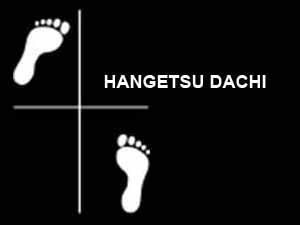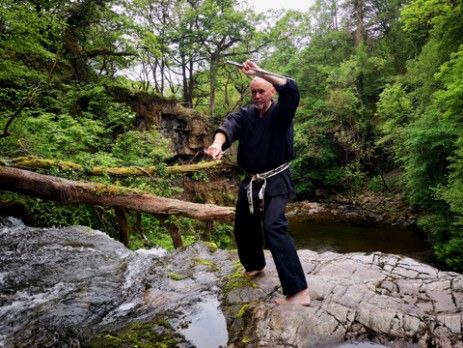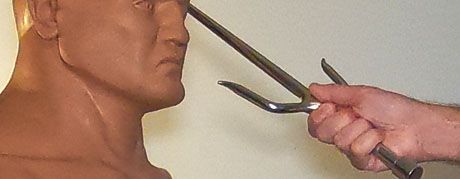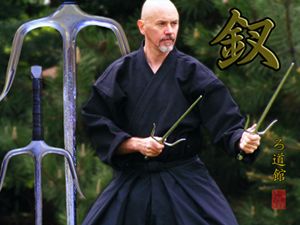Lesson 2 / Stances in Sai jutsu - Rosowski Budokan Institute
Main menu:
Lesson 2 / Stances in Sai jutsu
Basic lessons > Sai
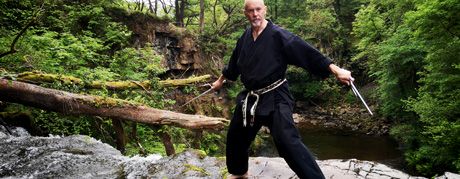
SAI JUTSU
BASIC STANCES FOR BEGINNERS

HEISOKU DACHI ( Feet together stance)
Feet together. This is usually a transitional stance, although it is used as the ready stance in some kata.
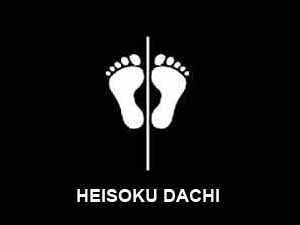
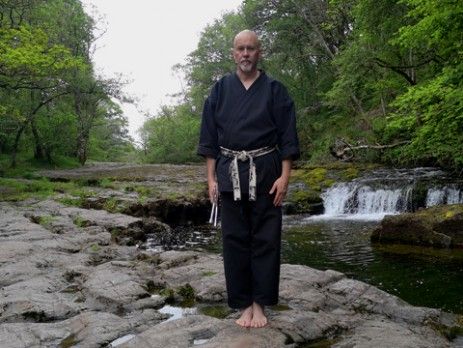

MUSUBI DACHI (Joining stance)
Heels together, toes open at about 45 degrees. This stance is used to perform the formal respectful bow, rei.
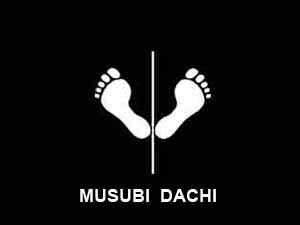
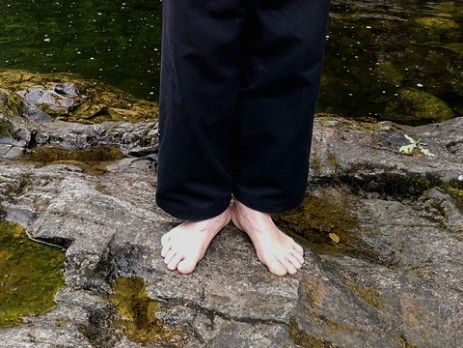

HEIKO DACHI ( Parallel stance)
The feet are shoulder width apart, and their outer edges are parallel. This is a common transitional stance in many kata.
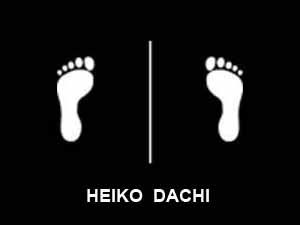
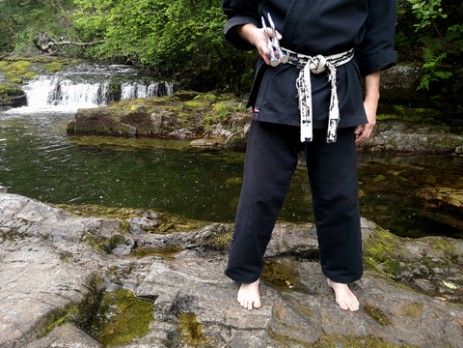

HACHIJI DACHI (Natural stance)
The feet are shoulder width apart, toes open at 45 degrees. This is the basic ready stance.
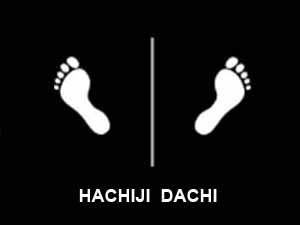
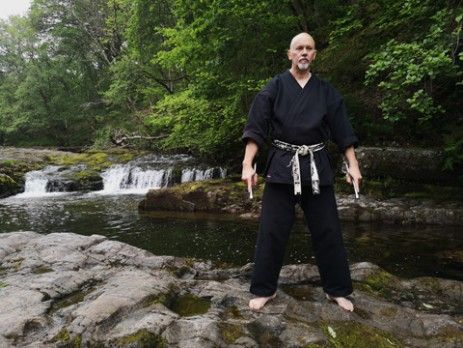

NEKO ASHI DACHI (Cat foot stance)
All weight rests on the back leg, which is bent at the knee. The rear foot is turned at about 20-30 degrees out and the knee sits at the same angle. Only the toes of the front foot rest on the ground. There is no weight on the front foot, and there is no bend in the ankle joint - front knee, front shin, and the rise of the foot (but not the toes) form a single line.
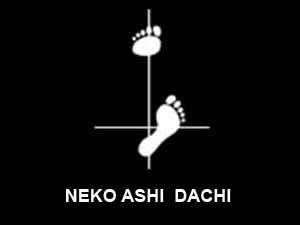
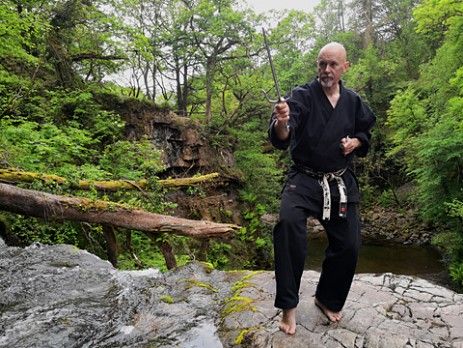

ZENKUTSU DACHI ( Forward stance)
The rear leg is completely straight at the knee and extended backwards. The front foot faces straight ahead, the rear foot is turned out 25-30 degrees. The heel of the rear foot rests on the ground. Zenkutsu-dachi is one of the most common stances in kata.
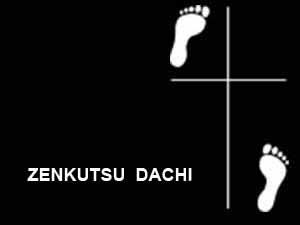
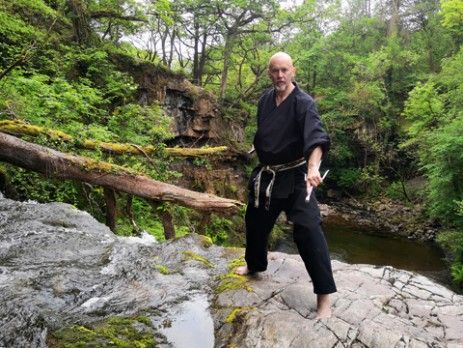

KIBA DACHI (Horse stance or rider stance)
Feet are parallel and wide, weight is central and low, with the back straight and the knees and feet pointing slightly inwards. There are some minor variation of kiba-dachi between schools, such as the distance between the feet and the height of the stance.
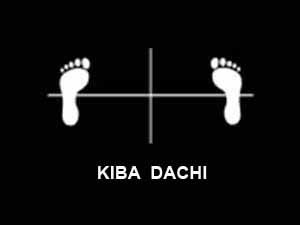
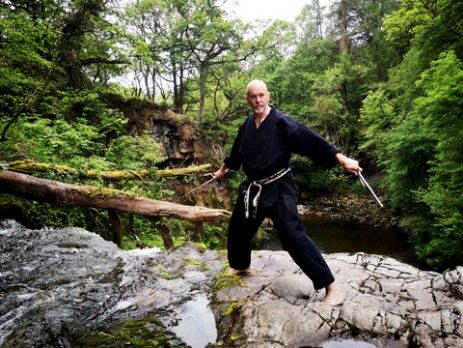

KOKUTSU DACHI ( Back long stance)
This is a mirror image of zenkutsu-dachi, where the rear leg is bent strongly at the knee and the front leg is slightly bent. The rear foot is turned 90 degrees to the side. The body is turned 90 degrees or more away, except for the head which looks to the front. Kokutsu-dachi is a great defensive stance because of the amount of energy stored in the rear leg, ready for a counter-attack.
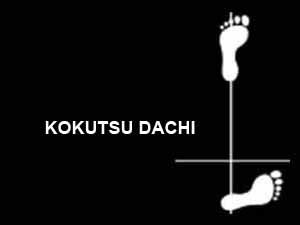
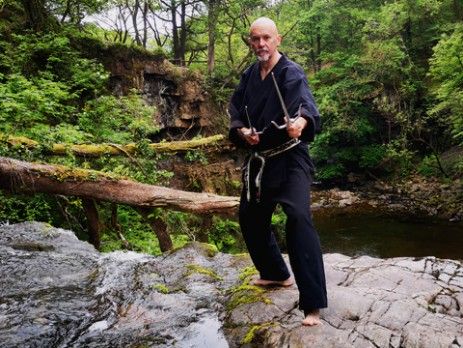

HANGETSU DACHI ( Halfmoon stance)
This stance should be a little shorter then a normal step, with the feet shoulder width apart, and if your opponent were to stand in front of you, your toes would point to their center, making a triangle between your feet and your opponent's center line.
